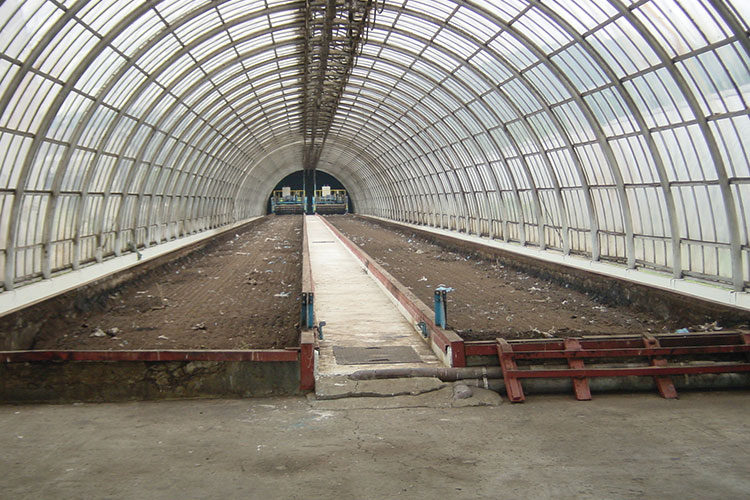Merits of Establishing a Hazaka Plant
Merit1 All possible organic waste can be processed.
Organic waste (without hazardous materials), such as garbage, sludge, human waste, livestock excreta, blood, seafood and oils generated from communities, can be accepted as a raw material for fermentation.
Merit2 Fermentation process can be performed in a short period of time.
When waste is supplied in the late afternoon, the waste will be steaming the next morning. This proves that the environment of the plant has been maintained so well that the fermentation starts quickly. As already explained, the primary fermentation and secondary fermentation are performed in continuity, and the waste can be processed as quickly as 25 days.
Merit3 No deodorization system or measures against contaminated water are required.
According to our predecessors, it is said that the “making of high quality compost does not smell”. Since we have carried over and are utilizing this wisdom, a deodorization system is not required. Also, no contaminated water is discharged.
Merit4 Plants can be built at the appropriate size and cost.
The number of lanes for the fermentation tanks where the waste is processed is calculated appropriately on a scale suitable for the volume of waste brought in. According to Merit 3, the construction costs can be kept to a very low amount.
Merit5 High quality compost can be produced.
When seeds are spread directly to the product itself, unlike unripened compost, buds will grow the same as when natural soil is used. This means that fermentation decomposition is progressing very well. Moreover, there are many types of microorganisms which are effective for plant growth, and sufficiently balanced mineral ingredients are contained in the compost. Many users have made favorable comments saying that this is high quality fully ripened compost.
Consideration of Urban Areas
We carefully pay attention to the prevention of scattering of dust, runoff, odors and noise, particularly when building a plant in an urban area.
Since the waste and return compost are mixed in a dome while the shutters are completely closed, there will be no scattering of dust or runoff. Although a deodorization system is not required, if a deodorization system is used while the dome is closed, odors can be prevented completely. There is almost no noise generated.
 Mixture Supply Inlet
Mixture Supply Inlet
 Discharge Outlet
Discharge Outlet


Since the plant is enclosed in a dome, no dust will scatter or flow out of the dome even during agitation.
Flow of Introduction
When introducing a Hazaka Plant, the plant will be built per the following procedures based on the agreement.
- Requests for field survey
- Field survey
- Creation of plant construction design specifications
- Request for pplant construction
- Start plant construction work
- Complete plant construction work
- Trial runs
- Operation
Introduction of Track Record of Hazaka Plant
There are 15 Hazaka Plants in operation nationwide, from Hokkaido in the north to Kagoshima Prefecture in southern Kyushu. Refer to the following “Nationwide Hazaka Plants” page.